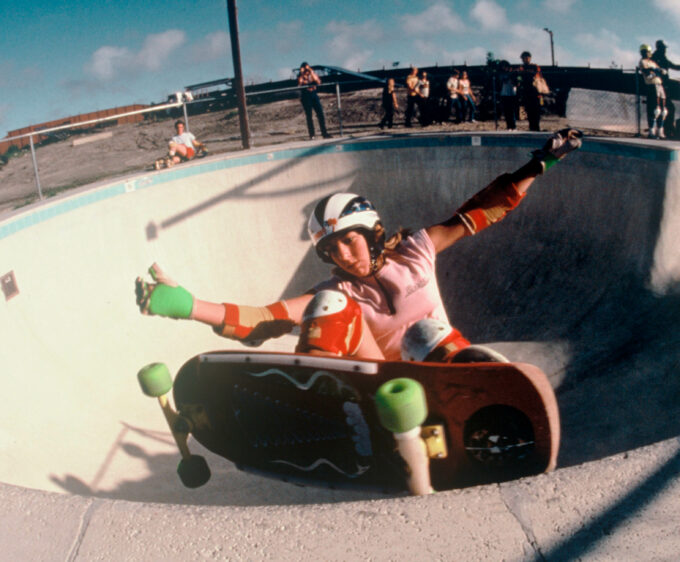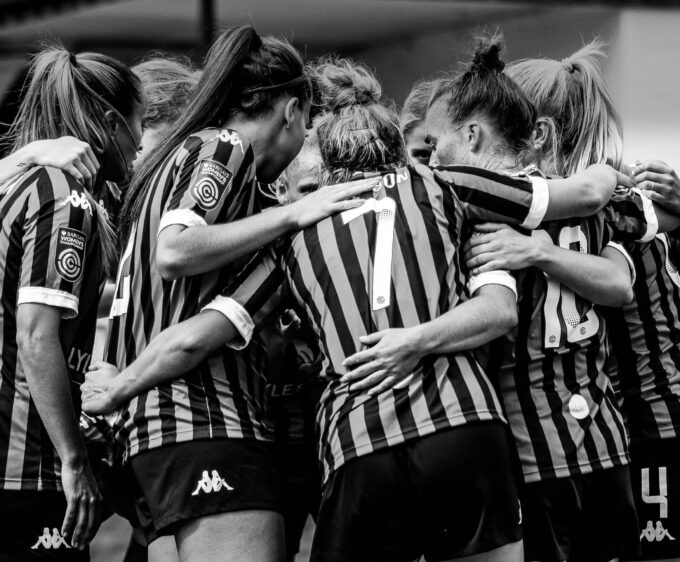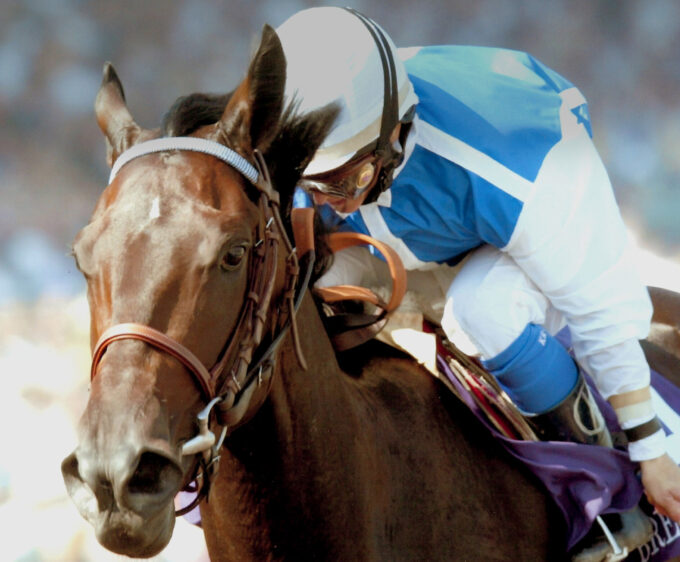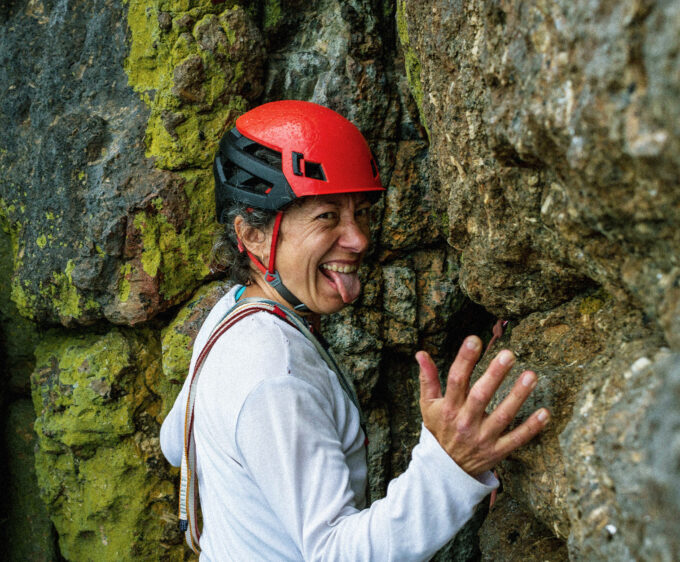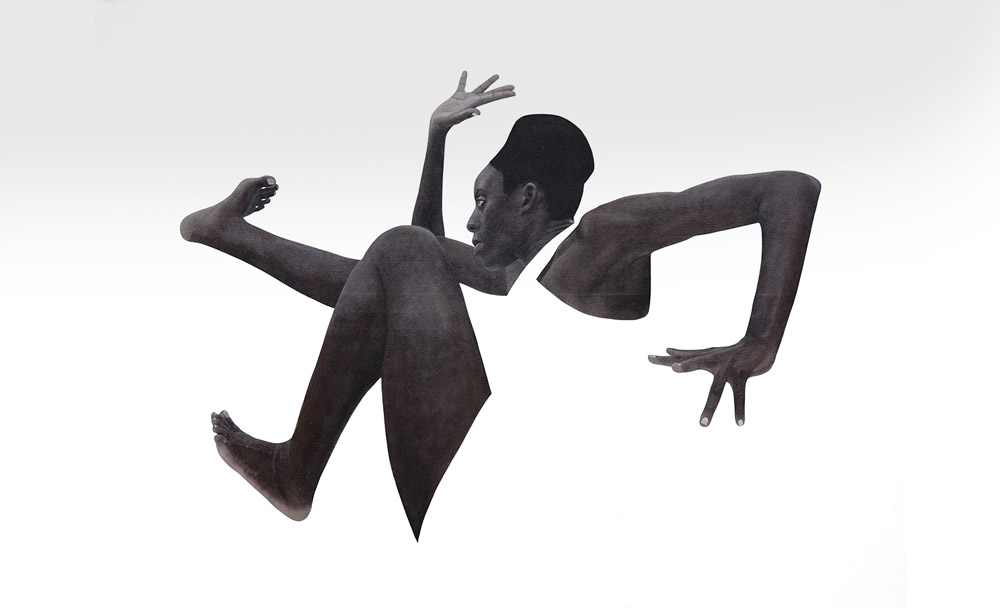
Pioneer: Sungi Mlengeya
Celebration of friends, movement and Black women's stories. We meet pioneering Tanzanian artist Sungi Mlengeya to discuss how she followed her innate need to create
By Glorious
Artwork by Sungi Mlengeya
The expressive figures displayed on the canvases of self-taught artist Sungi Mlengeya tell the stories of women in her wider community. Focusing on their stories, the Tanzanian artist has developed her own distinctive style, inspired by her love and respect for the women who have shaped and nurtured her life. Growing up in Arusha, Sungi studied finance at university, moving on to work in a bank for four years before abandoning her safe career to take up art full time. Since then she has exhibited extensively, both solo and in group shows in Africa including Investec Cape Town Art Fair in Cape Town, and further afield, such as at Art Basel, Miami Beach.

Glorious: Tell us about yourself: where did you grow up and how was school life? And where are you based now?
Sungi Mlengeya: I’m a visual artist from Tanzania. I was born in Dar es Salaam and when I was five, my family moved to Serengeti as my parents worked as wildlife veterinarians. We then moved to Arusha when I was a teenager although I was already familiar with the town as I had attended boarding school there earlier. We had weekly art classes in primary school that I enjoyed; they were my introduction to drawing and colour theory. Secondary school was stripped of fine art subjects of any kind. I tried to focus on subjects that I could enjoy – a bit of maths and not too much writing. I went ahead and did a Bachelors of Commerce in Finance at university; I thought this choice would help me not only manage my own affairs but also grant me an employment opportunity when I needed it. I worked in a bank a year after university for four years before I made the decision to quit and start painting full time.
Glorious: You are a self-taught artist, so when and where did your artistic journey begin?
Sungi Mlengeya: Since I was a child, I loved to create. I like to think that my passion was nurtured during our time in the park. The long, quiet afternoons with no distractions forced my sister and I to find ways to entertain ourselves, so we devoured the craft sections of my mother’s magazines and spent all day making things. Despite the occasional drawings here and there throughout the years, I only started doing art full time after I quit my job in June 2018. My studio was in Arusha where I had been living and working. A few months in, I took to travelling around East Africa to meet people in the arts and expand my opportunities. I spent some time in Nairobi, Mombasa and Kampala, where I met my gallery. I’m currently settling back home and I hope to keep creating works of art for a very long time.
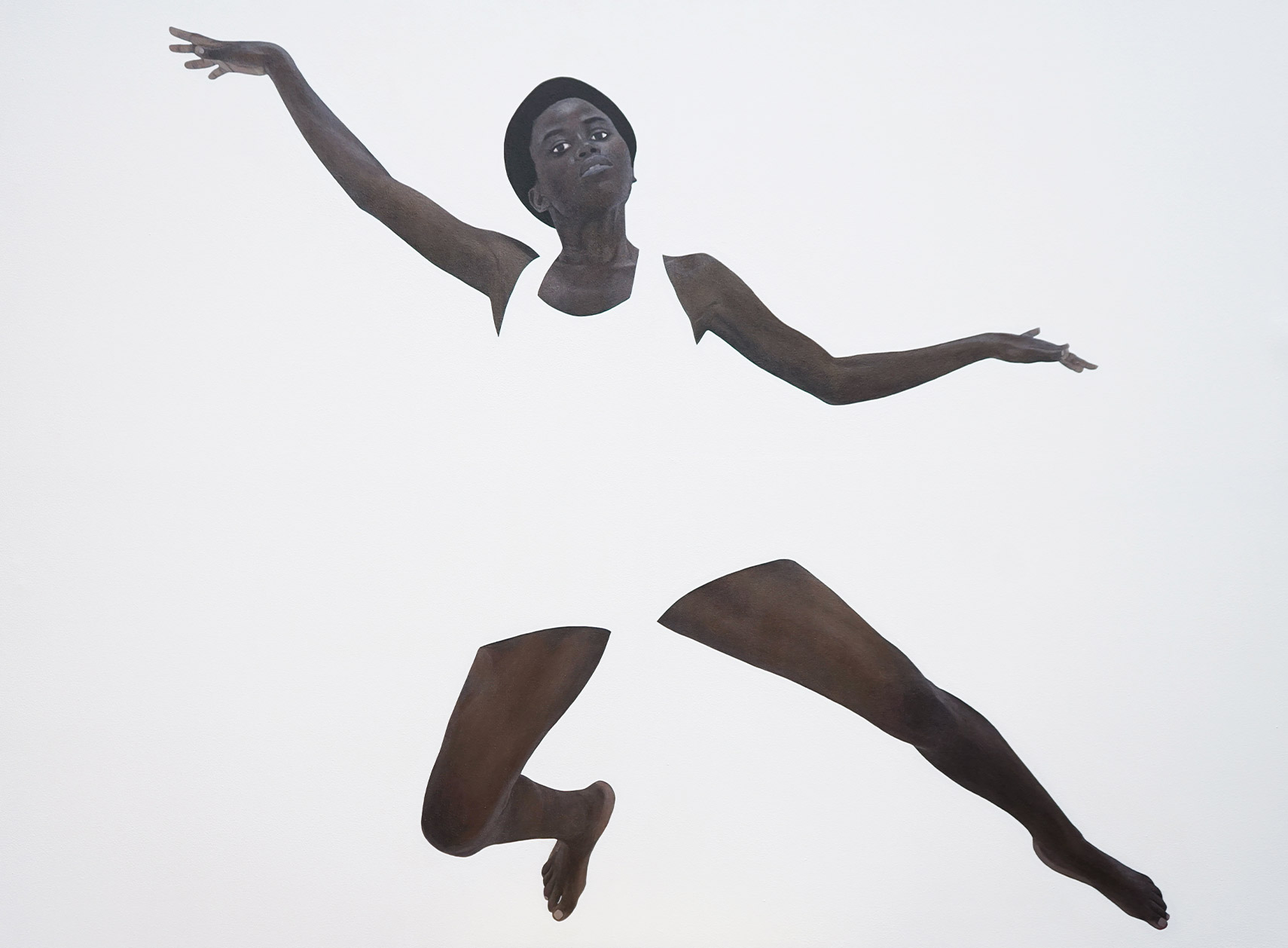
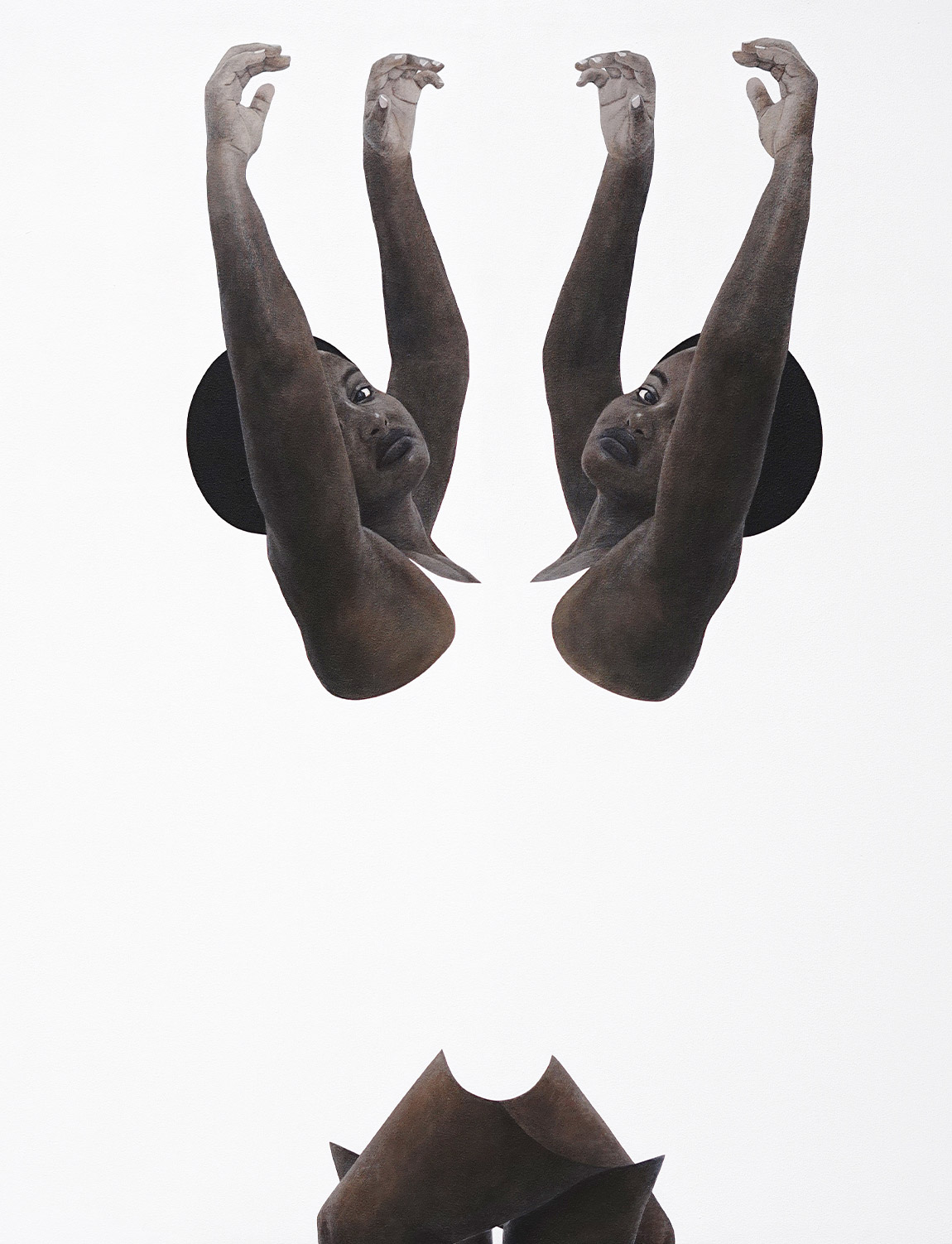
Glorious: Do you play or have any interest in sports, or support a team?
Sungi Mlengeya: I usually tell people that I could consider playing tennis only if I played alone, that way I won’t have an opponent to disappoint. Other than the nationalist cheer during the Olympics, my need to support the underdogs in world cups and my temporary support for teams with people I like, I’ve never been particularly interested in competitive sports. I never learned the rules back in school and no one wanted me on their team.
I pushed myself to be more physically active in my 20s; I tried tennis which was a failure, but I ran three half marathons, climbed two mountains and was committed to strict workout routines. That willpower has dwindled now, and the activities I most enjoy are walks and dance. I enjoy dance immensely and could go on for hours, it’s more than a physical experience for me.
Glorious: Where do you find most of your inspiration for your paintings?
Sungi Mlengeya: I am constantly driven by an innate need to create, although there are many things that spark something in me. These could be anything from looking at beautiful art in whatever style, observing heartfelt performances or moments with people to intricate design on tiles and fabric, airy clean surfaces and spaces, sea shells to raw earth.
Glorious: Are there any other artists focusing on Black women’s stories that inspire you?
Sungi Mlengeya: There are many artists depicting Black women beautifully, and my work might have unconscious influences from observing it all, although it is difficult to single them out.
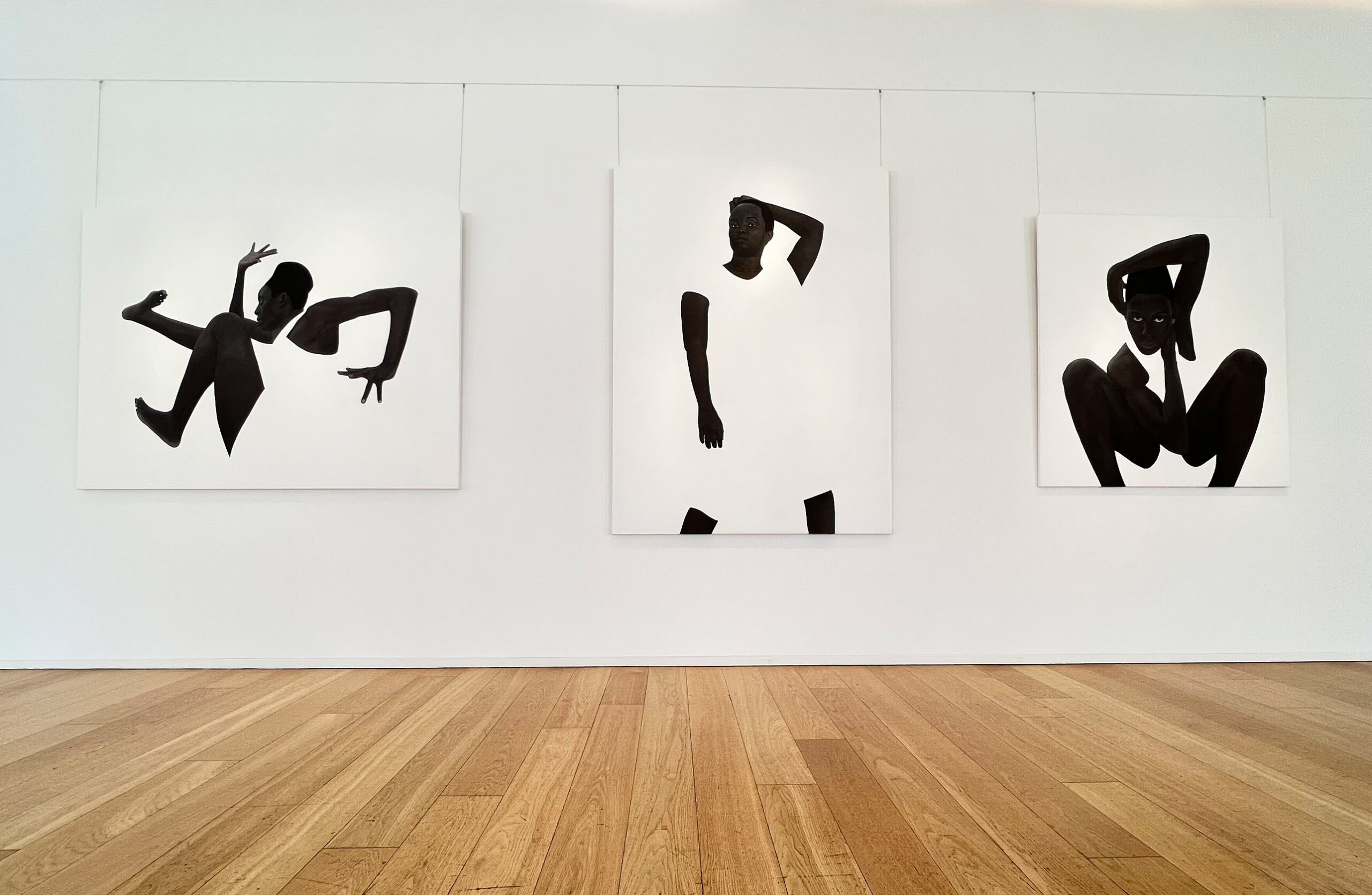
movement
Glorious: Your recent work has more movement and figurative forms than your early work, why is that?
Sungi Mlengeya: My early works were mostly portraits and as I got comfortable with my technique I added in hands and legs and eventually the full figure. Getting past the technique, I’ve been trying to see what the body can express with the absence of words – trying out various poses and movements to find out what could happen. Dance is part of my personal life seeping through my work, a capturing of a joyous activity. With dance also comes freedom, taking up space, ownership of the body; themes that are synonymous with empowerment and autonomy in life.
Glorious: Are the people featured in your work based on real people or are they a product of your vision?
Sungi Mlengeya: The people in my work are referenced from real people; friends, family and acquaintances.
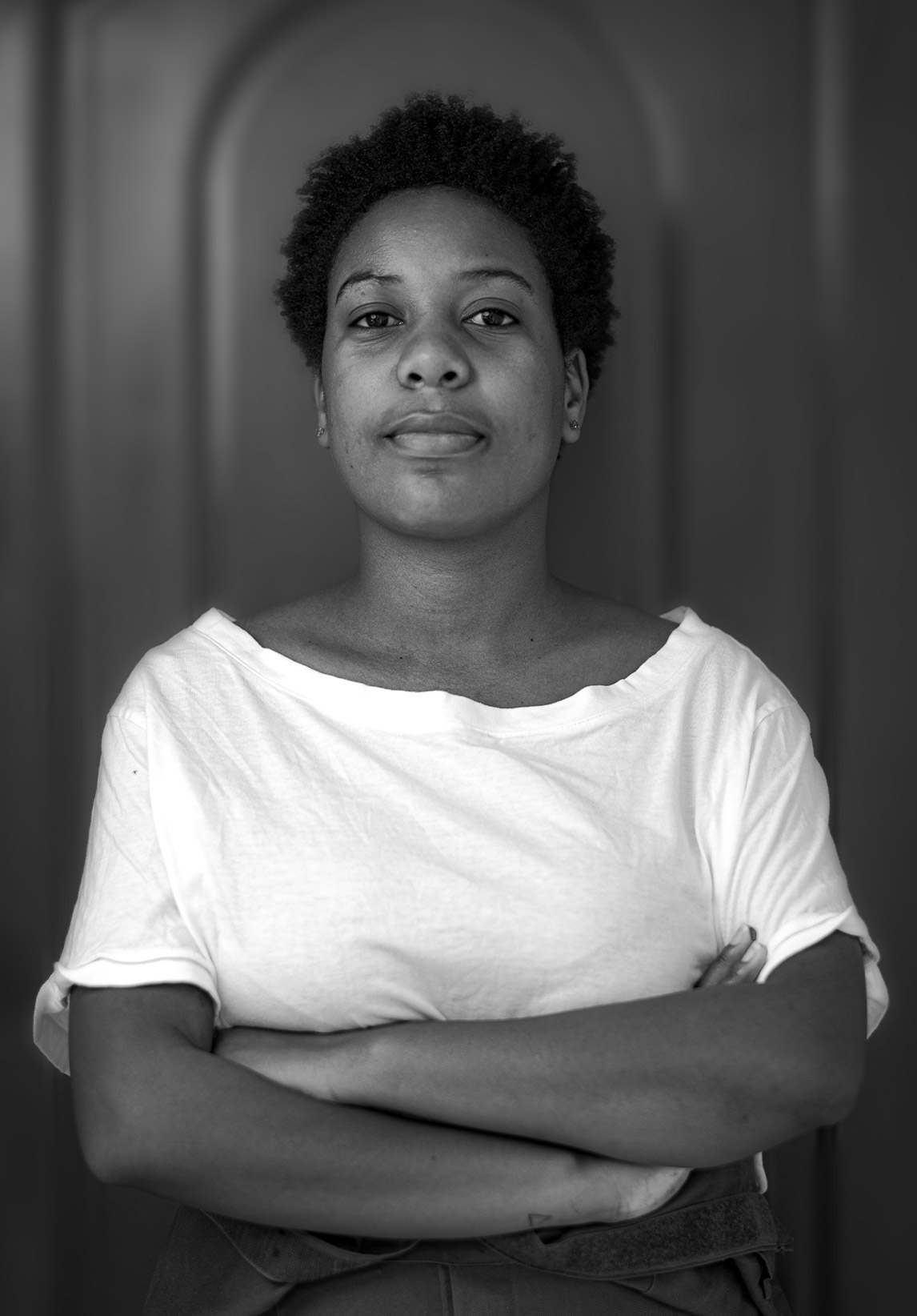
Glorious: What’s the importance of the negative space in your work? Is it a tool to add narrative to your work?
Sungi Mlengeya: I stumbled into the negative space when I decided to work on the subject first in one of my earlier portraits, because I was still looking for a perfect background for it. I loved the contrast of the dark tones against the plain white background of the canvas, the way the face was prominent and hard to miss, and the cleanliness and simplicity of it all. I loved it the way it was, and that was the onset of the negative space.
Over time, this space continues to give me a sense of calm and freedom. The space is like the beginning of things, an exciting time when the possibilities and choices are endless. I am not committing to a single story for myself and the people I paint, I am leaving the space open for ourselves to fill in the blanks with our ever-changing thoughts, and the possibilities for them all.

Glorious: Your work is described as a “commemoration of women who surround you”. Could you tell us about any of the women around you that have inspired your work?
Sungi Mlengeya: Some of my most enjoyable moments are casual hangouts in the homestead with my sister or mother, with an aunt or cousin around – or a hangout with girlfriends. There is fun chatter and an air of comfort, relaxation and love. A circle of loving women is something that I find myself going back to for celebration or comfort; they are a constant in my life. Women are the subjects I am most familiar with, as I am one and having been surrounded by them all my life. There is so much to sing about them, so much to represent and recreate, and that could be the reason I’ve been painting them for a long time.
Glorious: Besides those that surround you, are there any inspirational women who have influenced the works?
Sungi Mlengeya: I have worked with Lilian Maximillian, a remarkable dance artist from Uganda who I got to meet through a friend of a friend. We had a photoshoot session around the theme of dance which informed a number of my paintings.
Glorious: In 2022 you were on the Johnnie Walker and Trace Africa Top 30 list of leading creatives of the continent. Has this honour changed the way you approach your practice or see yourself as an artist?
Sungi Mlengeya: If anything has changed, I feel more grounded in my creative path, to keep doing what I love, pursuing my true intentions, however different they are.
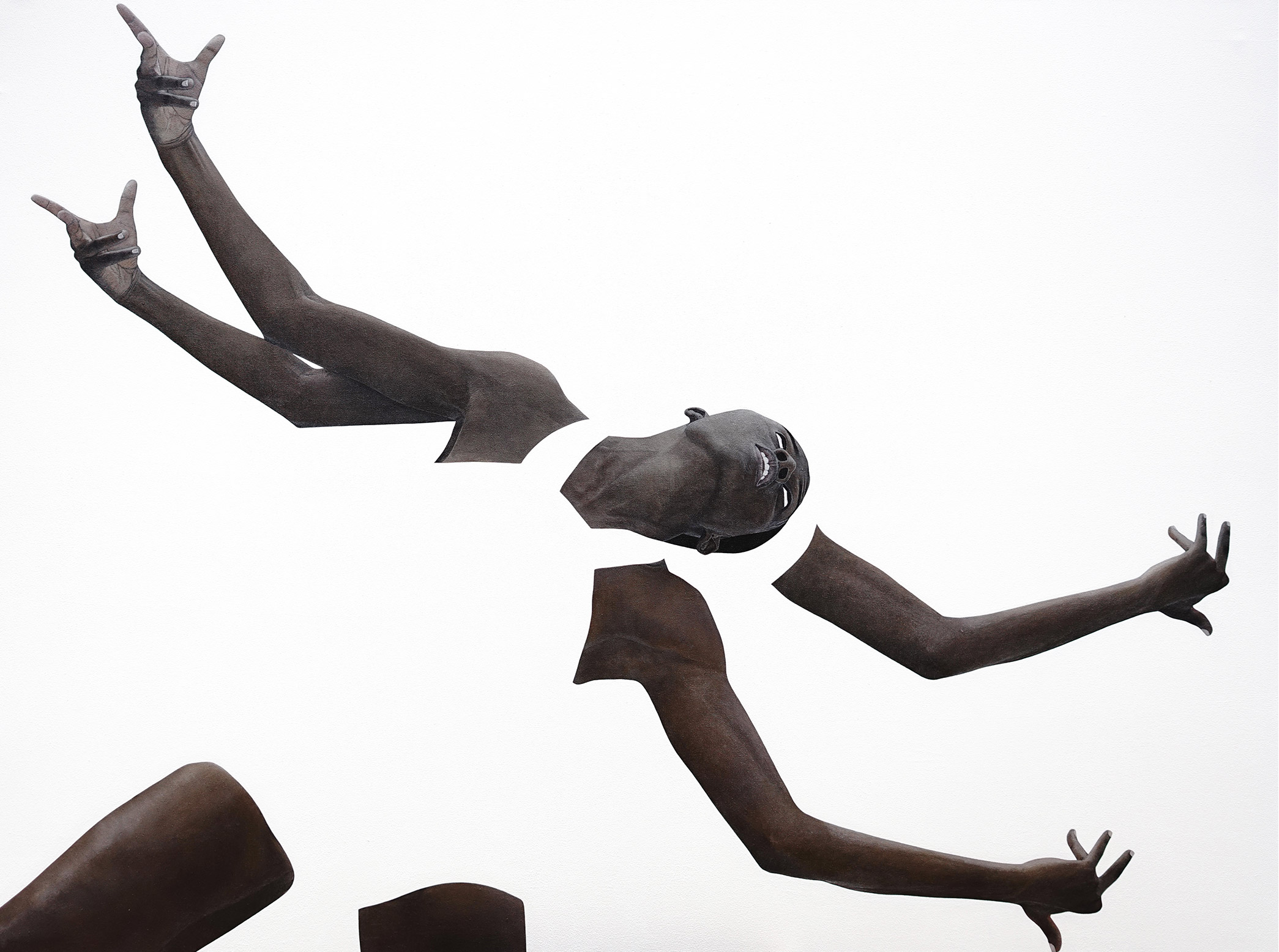
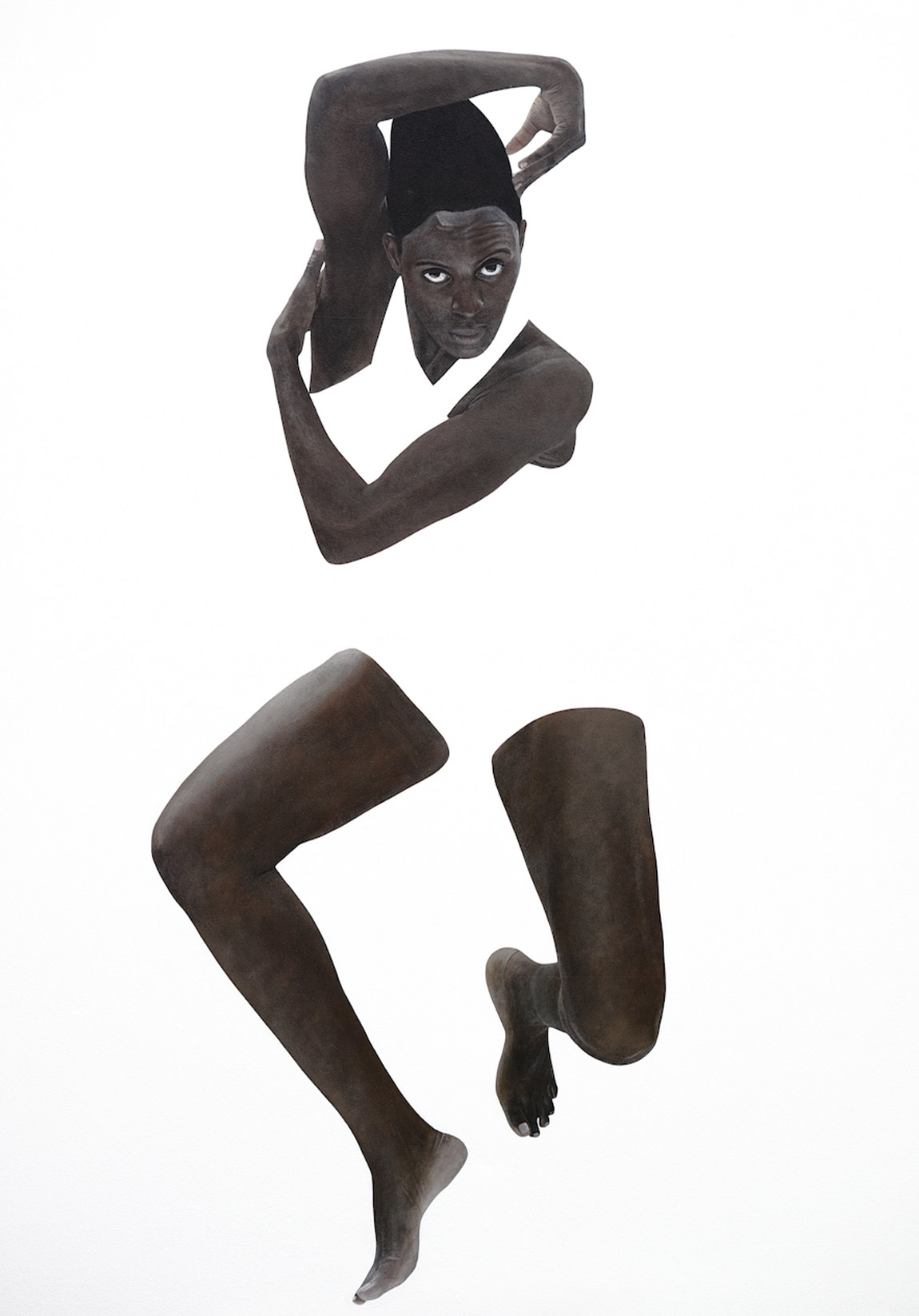
Glorious: You have previously mentioned that you find painting yourself very uncomfortable, why is that?
Sungi Mlengeya: The idea of painting myself is still scary. I think it could be quite an emotional, deeply reflective experience to have to critically observe and recreate a likeness of myself over several days. A lot could come out of that, and I will need the space and time to feel it all.
Glorious: Has there been any of your art works that have been more significant to you than others?
Sungi Mlengeya: I love most of my paintings, but two that come to mind are Constant III and Kyomu. I knew the former was special as soon as I put my brush down. It depicts two women, one with hands over the other lovingly, protectively, comfortably – it reminds me of a warm, constant friendship. The image of this work has already appeared in various features including a book cover. I’m happy others love it too. Kyomu was one among a series of five portraits that I picked for my first limited edition series; I love how the model’s strong persona oozes through.
Glorious: Could you talk about some of the titles of your pieces, for example Dust Rising and Crossroads?
Sungi Mlengeya: I find myself looking for titles at the last minute just when they are needed, trying to quickly come up with titles that are reflective of my thoughts on the paintings. Dust Rising is a bold piece with a woman in dance motion stretched over the almost 2-metre-high canvas. Her pose makes me think of traditional dance and an earthy stage. Dust is rising from her movement, but ‘dust rising’ could also mean commanding attention or a disruption of the norm.
The angular criss-cross limbs in Crossroads made me think of intersections, junctions and roads; of paths and options and choices.
Glorious: You have previously spoken about maybe choosing a different medium as you evolve, what other materials intrigue you to tell your story next?
Sungi Mlengeya: I’m challenging myself to keep an open mind to experiment with different media, but I’m drawn to clean raw surfaces so I see myself inclining to materials with natural textures and minimal tones.
Glorious: What’s next for Sungi Mlengeya?
Sungi Mlengeya: What’s next is exploration; I’m keen to see what will come out of that.
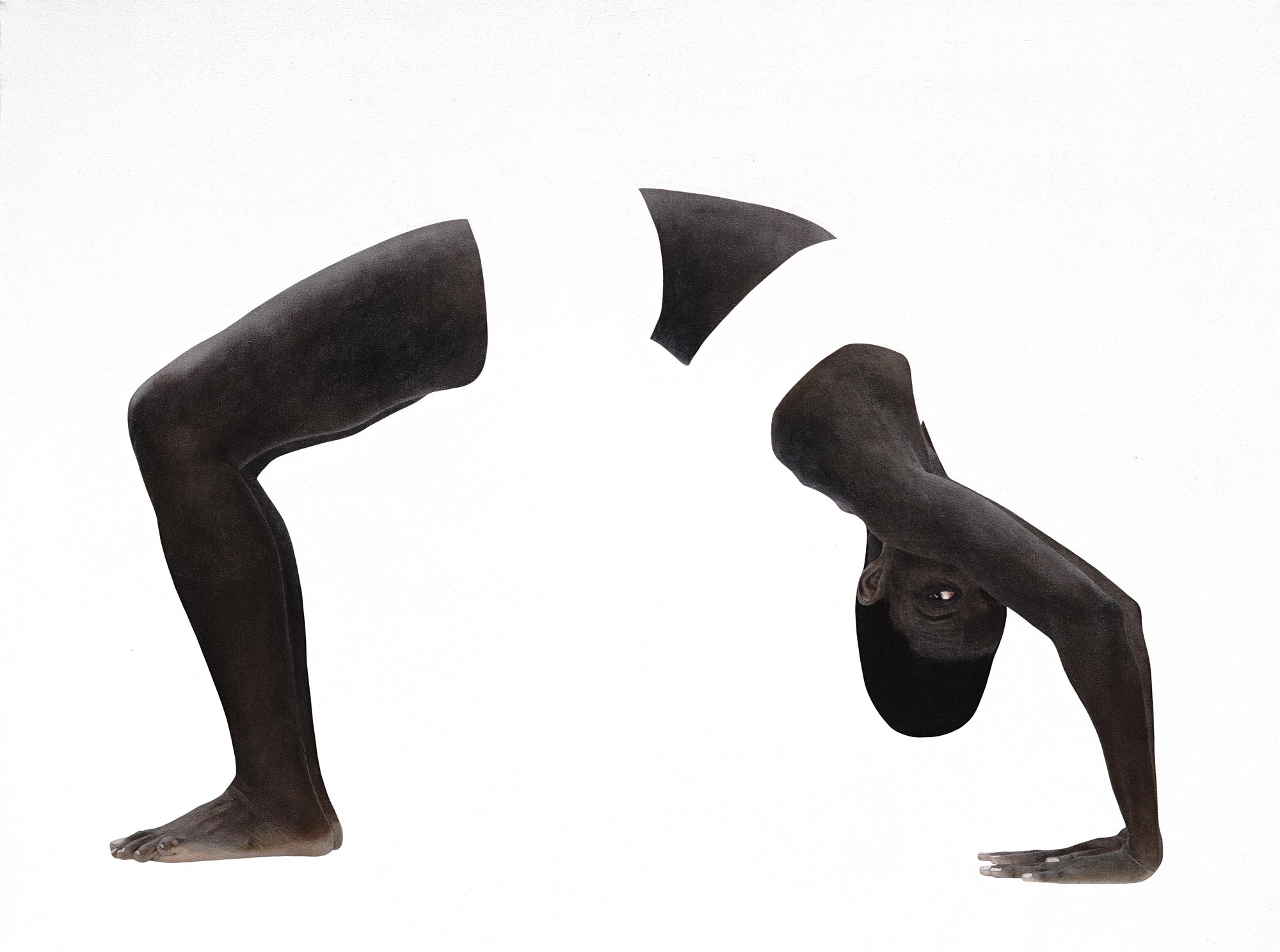
Artwork by Sungi Mlengeya,
Editorial design by this is root

